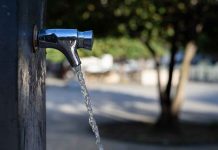
ILOILO City – The primary challenge facing the agriculture sector in Western Visayas is increasing agricultural production, not the issue of land conversions, according to the Department of Agriculture (DA). This emphasis comes in response to concerns about the impact of urban development on agricultural lands in the region and on food security.
Amidst the economic growth in Western Visayas, the rise of industrial, real estate, and commercial buildings has led to some agricultural lands being converted into residential or industrial areas. While this has raised alarms about potential threats to food security, Dennis Arpia, regional executive director of DA, clarified that the true hurdle is enhancing farm productivity.
“The real challenge for us is increasing the level of productivity,” said Arpia, addressing media questions about the impact of widespread land conversion. He highlighted that despite possessing some of the largest rice planting areas in the country, Western Visayas reports one of the lowest production rates per hectare — only 3.4 metric tons, which is below the national average of four metric tons.
Arpia pointed out that this is not the fault of the farmers but largely due to the climatic conditions that affect crop yields. To combat this, he advocates for the adoption of high-yielding technologies, particularly hybrid seeds, which can significantly increase production per hectare.
“If our farmers can increase their production, they can also recover their costs and achieve substantial profits,” he said.
Arpia also noted that it is unsustainable for farmers to continue producing less than four tons per hectare if they are to remain profitable.
The DA is actively promoting the use of advanced farming technologies and appropriate cultivation practices, such as conducting soil tests, to sustain farmers’ interest and success in agriculture.
“The challenge of land conversion can be mitigated by correct practices and technology adoption,” Arpia said.
This wet cropping season, DA-6 aims to plant hybrid seeds on 60,000 hectares of farmland to make up for the production shortfall caused by El Niño.
The region has 300,000 hectares available for rice planting during the wet season, although not all areas have been reached by rainfall.
For the entire year, the DA-6 has set a goal to cultivate hybrid rice on 100,000 hectares of farmland across the region.
According to 2023 data from the Philippine Statistic Authority, the region produced 2,263,158.3 metric tons of palay, marking a decrease of 2.5 percent or 58,435.4 metric tons compared to the previous year./PN



